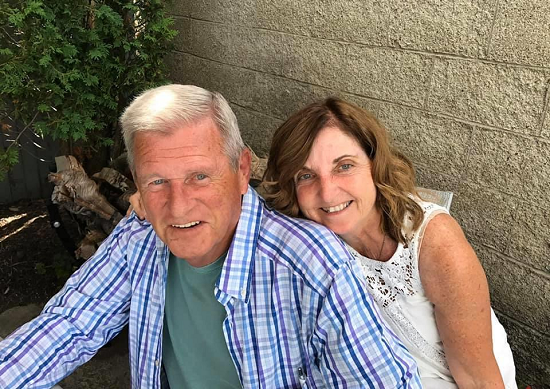
Editor’s Note: This is part II of a three-part series. Read part I HERE.
BY MIKE FUHRMAN
Mike Danaher was sure he was going to die.
After being admitted to Iredell Memorial Hospital and placed in isolation with a high fever and difficulty breathing in early March, Danaher soon lost the will to live as his condition worsened while his doctors tried to figure out what was wrong and find an effective treatment.
A retiree who lives in New York, Danaher fell ill while he and his wife Lou Ann were visiting colleges in South Carolina with their granddaughter, who lives in Statesville. He was among the first COVID-19 patients in Iredell County.
Some 2,300 people have tested positive for COVID-19 in Iredell, and doctors have attributed 23 deaths in the county to the novel coronavirus.
For Danaher, the early symptoms were light-headedness, fatigue and a fever that hovered around 104 degrees for days. After spending several days in isolation without improvement, he told his family to take his clothes home from the hospital. He didn’t think he would need them again.
“I just gave up hope,” said Danaher, who worked in law enforcement for 20 years and then retired a second time after 34 years with National Grid. “I had so many wires and tubes in me. I could not move. I could not get out of the bed. I just could not stand being confined like that. I had no life.”
For Lou Ann and the couple’s daughters, it was a scary time.
In adherence to the hospital’s protocols, Danaher’s family had to leave because doctors were concerned that Danaher had COVID-19 and they had been exposed. Their continuing presence would have put others in the hospital at risk.
“Mike was there alone, and we did not know what was going on,” Lou Ann said.
Doctors wanted to place Danaher on a ventilator because his oxygen levels were low. He refused, however, because of a pre-existing condition. His first two tests for COVID-19 came back negative, but his primary doctors were not convinced so they continued to treat him aggressively after he developed pneumonia in both lungs.
An antibody test later proved that Danaher had contracted COVID-19.
During the early stages of his hospitalization, Danaher’s outlook was grim. He remained in isolation for 15 days.
“He was totally defeated,” his wife recalled. “He said take my clothes home. I’m not coming out of here.”
Although his family discussed having him released and taking him home, his wife put her foot down.
She would put her trust in the medical professionals – and they did not disappoint her.
Dr. Joseph Mazzola, the vice president for Medical Affairs at Iredell Health System, arranged for Lou Ann to speak with her husband’s primary doctors and nurses. They answered her questions and assured her they would give him the best care possible, using the latest information and research about COVID-19.
The team of doctors and nurses who cared for Danaher provided regular updates on his care and condition while he was in isolation. They had virtual visits using a hospital iPad.
“I felt very, very safe and I knew Mike was in good hands,” Lou Ann said. “I’m forever grateful to them all. … The team was outstanding. They really cared — even after Mike left.”
Danaher gradually improved and was released from the hospital at the end of March.
“They are surprised he lived,” Lou Ann said. “They were in tears. One cried. They did not think he was going to walk out of that hospital. Mike gave up.
“They never gave up.”
Danaher returned to New York in May. Nearly six months later he’s still not 100 percent.
At age 82, he’s grateful for the care he received at Iredell Memorial – and for the extra time he has with his family.
“It just does a number on you. I never had anything like that before. I hope I never do again,” he said.



